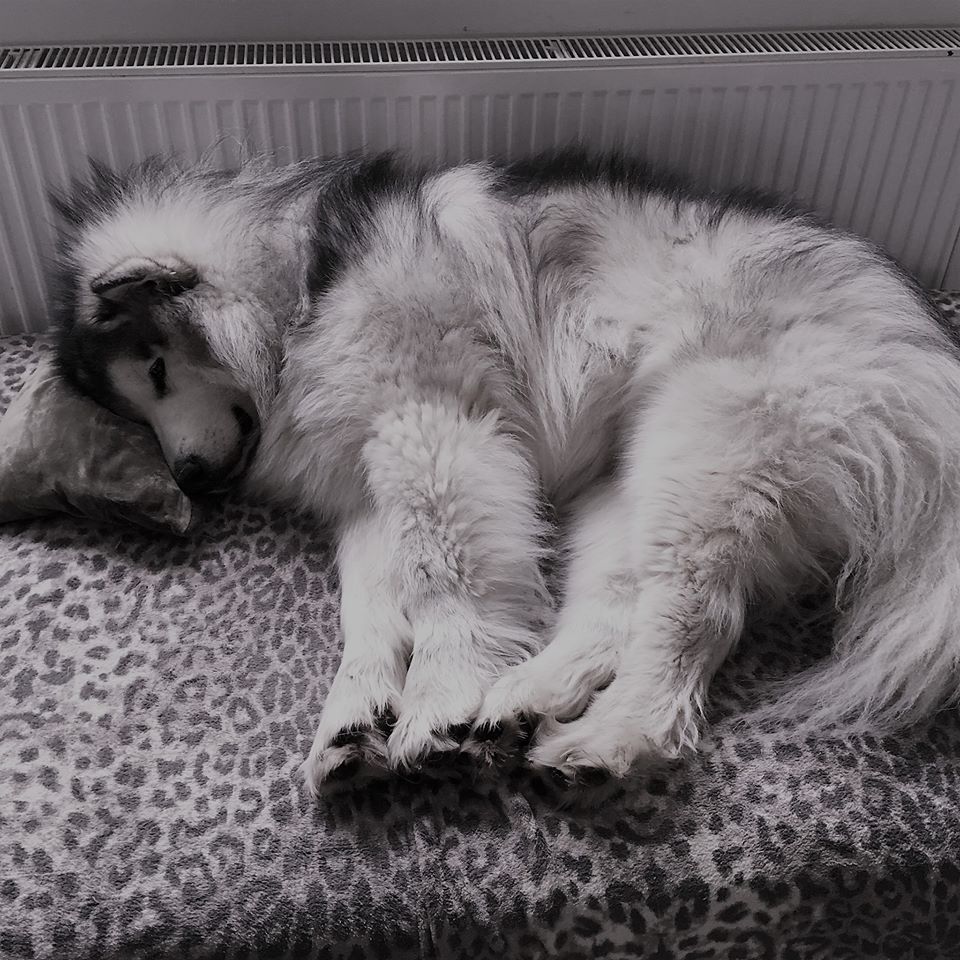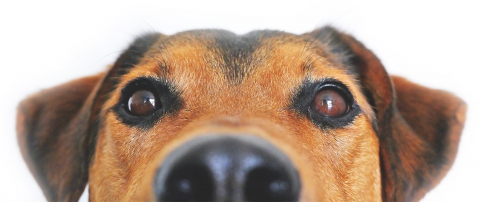Life after Lockdown
The following article was written to help with the impending “return to routine” for our dogs based on the perspective of one of our fabulous members and her very lovely Alaskan Malamute, Angelo.
Please note if your dog is already showing signs of distress from separation anxiety then you should seek help from a qualified, force-free behaviourist first.
My dog, Angelo, has loved having me at home during Lockdown but I am aware that he is a sensitive soul and when a puppy suffered with minor separation anxiety. We haven’t been able to have the normal walks with his bestie Labrador, Dilys, which in itself has been a change for him. We have therefore done more enrichment activities and training at home. In addition, he definitely has had a lot more of my time, attention, play and cuddles.
Dogs are a great source of comfort at this time and provide enormous health benefits. Showing affection by stroking our pets releases the bonding ‘bliss’ hormone oxytocin. This reduces cortisol (stress hormone) which can lower blood pressure, heart rate and makes us feel happy and connected! It is likely we are all inclined to be doing more of this during lockdown! However, with this in mind, I am aware that with Angelo, he could potentially struggle when I go back to work.
In order to help with this transition, I have started to regularly schedule time where he is left alone.
With the possibility of Lockdown restrictions easing, I am also concerned about a few of my clients dogs. This is an opportunity for me to connect with them and discuss preparations for moving forward. Many are self-isolating, shielding or are furloughed from work and therefore with their dogs all day every day. There is a possibility the future absence of snuggling at their feet whilst taking a conference call, zoom friends and sharing meal times together, may hit some dogs very hard.
In order help their dog feel confident when alone again, now is the perfect time to gently start preparing them for their future routine to avoid any potential distress.
The only caveats to this are when a dog is already showing signs of separation distress when alone. For these owners, I advise them to contact a behaviourist to work on a personalised behaviour modification programme as soon as possible. Secondly, to ensure any enrichment activity is suitable and safe for the dog when unsupervised.
Here is a link to a wonderful trainer who regularly runs free 5 day online workshops and specialises in Separation Anxiety:
https://www.facebook.com/groups/separationanxietydogsupport
It is not easy during Lockdown as we are not allowed to leave the house other than for essential journeys. This can make controlled absences seem difficult to schedule. Below are some of the strategies I used historically plus some I have adapted and undertaken for my own dog at this time.
Initially I started with very short periods of absence.
I built up the duration of time slowly.
Viewing Angelo remotely via a camera, allowed me to see how he coped when I was not there. I was also able to make sure I returned before he became distressed. This is an important measure, as you want your dog to feel that nothing scary happens whilst you are out such as feeling anxiety or panic. Once a dog reaches this emotional state, he has already proven to himself that being alone is stressful.
See link below for canine body language. Setting up a pet monitor which sends a feed to your phone is a great way of checking that your dog is relaxed and not distressed:
https://doggadgets.co.uk/product-category/dog-monitors/
Alternatively, you can set up an old phone to record or an old baby monitor to listen from another room. There is a wonderful App on Google Play (Dog Monitor) that allows you to use one phone/tablet as a camera and another phone/tablet as a receiver, so you can remotely view your dog whilst out or in a different room.
Choosing the right moments to practice controlled absences is vital. I chose mine carefully and only left home when Angelo was in a relaxed mood. For example, he had been walked, decompressed and appeared calm.
Ensure your dog has a comfortable bed or a separate area such a den that he can access. Some dogs may like quiet time in an area away from members of the family. The bed or area needs to be in a safe place and hold a positive association. This should not be somewhere he is sent for any time out. As he is an Alaskan Malamute weighing 52 kilos, Angelo has his own sofa, which he loves.

Sufficient rest and sleep are vital for a dog’s well-being; quiet time alone can provide a perfect opportunity for our canines to do this.
Introducing an activity toy, such as a Kong can be beneficial. Spend time with him as he learns how to access the food and begins to enjoy using it. You can then progress to leaving him independent of you e.g. behind a child gate, another room or in the garden with his Kong whilst you are inside.
The distance will be dependent on his level of comfort.
If you have a dog that enjoys scent work or problem solving, leave his food portion under flower pots for him to sniff, seek and find or using a puzzle feeder. Alternatively, you can work in the garden whilst leaving your dog inside. Note – I never leave him alone at home with a Kong. Leaving him in one room for a while whilst you are in another.
With Angelo as a puppy, I randomly walked upstairs. Initially, I was silent, progressing to turning on the radio, calling a friend or taking a bath. I did this gradually building the duration of time slowly as he is a dog that has a great fear of missing out. The gradual stages broke it down in order to set him to set him up for success. In the early days, if he followed me, I would gently close the bathroom door whilst I used the toilet.
During Lockdown, some days I give him enrichment activities at home rather than a walk whilst I use this time to exercise myself outside of our home or go shopping. I try and do this at a time I would normally be working. The final progression was getting ready in the same way that I normally do, even to the point of grabbing my ID badge and car keys before leaving the house. When leaving the house for a couple of hours (we had built up to 2.5 hours before Lockdown). I give him a Licki mat which is spread with his pure green tripe, soft cheese or occasionally as a treat peanut butter (xylitol free). He does not even glance back at me when I go. Licking is a soothing and calming activity for dogs. Angelo enjoys this and it gives him a positive association with my departure.
Here are some links which hopefully will of interest for you along with a free webinar which is available until the end of the month regarding Separation Anxiety Concerns during Covid 19:
https://www.facebook.com/groups/canineenrichment
https://www.top10homeremedies.com/wp-content/uploads/2017/09/signs-your-dog-may-be-stres.jpg
We do hope you have found this article interesting and helpful and that life after lockdown is as straightforward as possible for you and dogs 🙂

